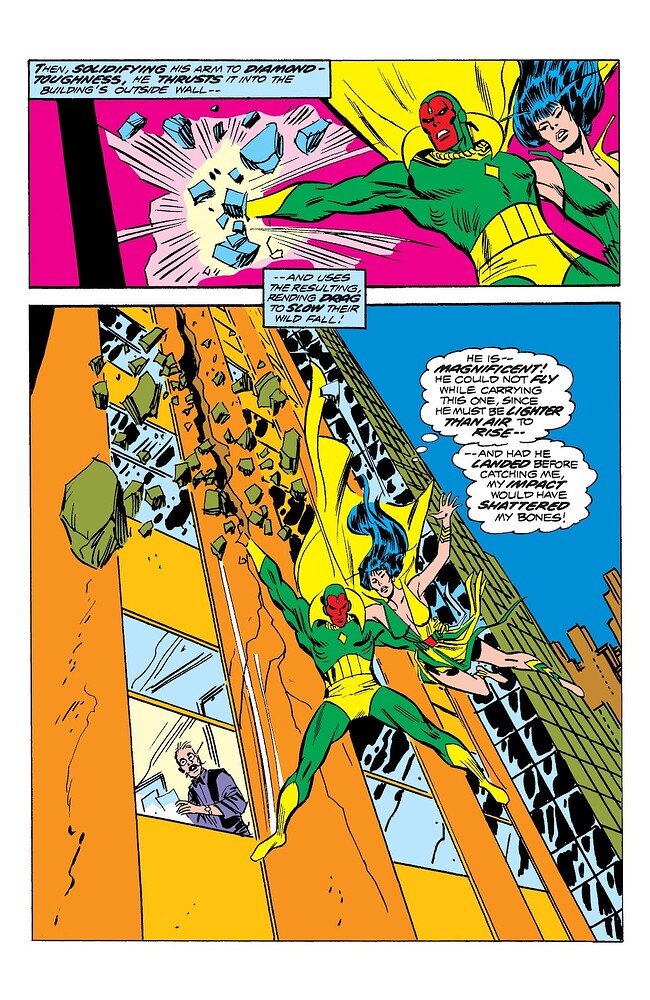Jim_Laine
Janvier 4, 2024, 9:00
4355
ByrneAustin:
De comiclink !
« Note that both pages are on one 10 » X 15" board. It was a common practice in 1974 for Marvel to have one art board per issue contain two pages worth of art. Profit margins were very thin in the comic book business in the mid-1970s and this was an attempt by Marvel’s publisher to cut costs by paying artists for 17 pages of story while printing 18 pages of story. Comic book historian Tony Isabella, who worked for Marvel as both an editor and writer in 1974 provided some background on this.
Et sur HERITAGE, plus succinct :
" In 1974, Marvel briefly toyed with a policy of once-per-issue having the artist draw two pages on the same board. This was intended as a money saving policy, as the artist was only paid for one « full » page. It proved to not be a popular policy with artists and was quickly abandoned. The result is a very small number of these double-page boards."
Je connaissais la pratique (sur Avengers , c’est frappant, notamment pour les épisodes de Bob Brown : on sent bien l’agrandissement). Souvent, ce sont des doubles pages, comme dans Avengers #120 .
Et parfois, ce sont deux pages simples, comme dans Avengers #121 .
Et là, pour cet exemple de Spider-Man, tu as le numéro dans lequel c’est publié ? Je n’arrive pas à déchiffrer le numéro.
Jim


